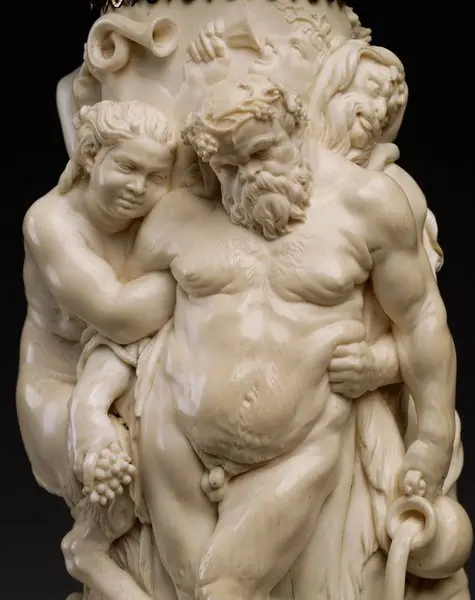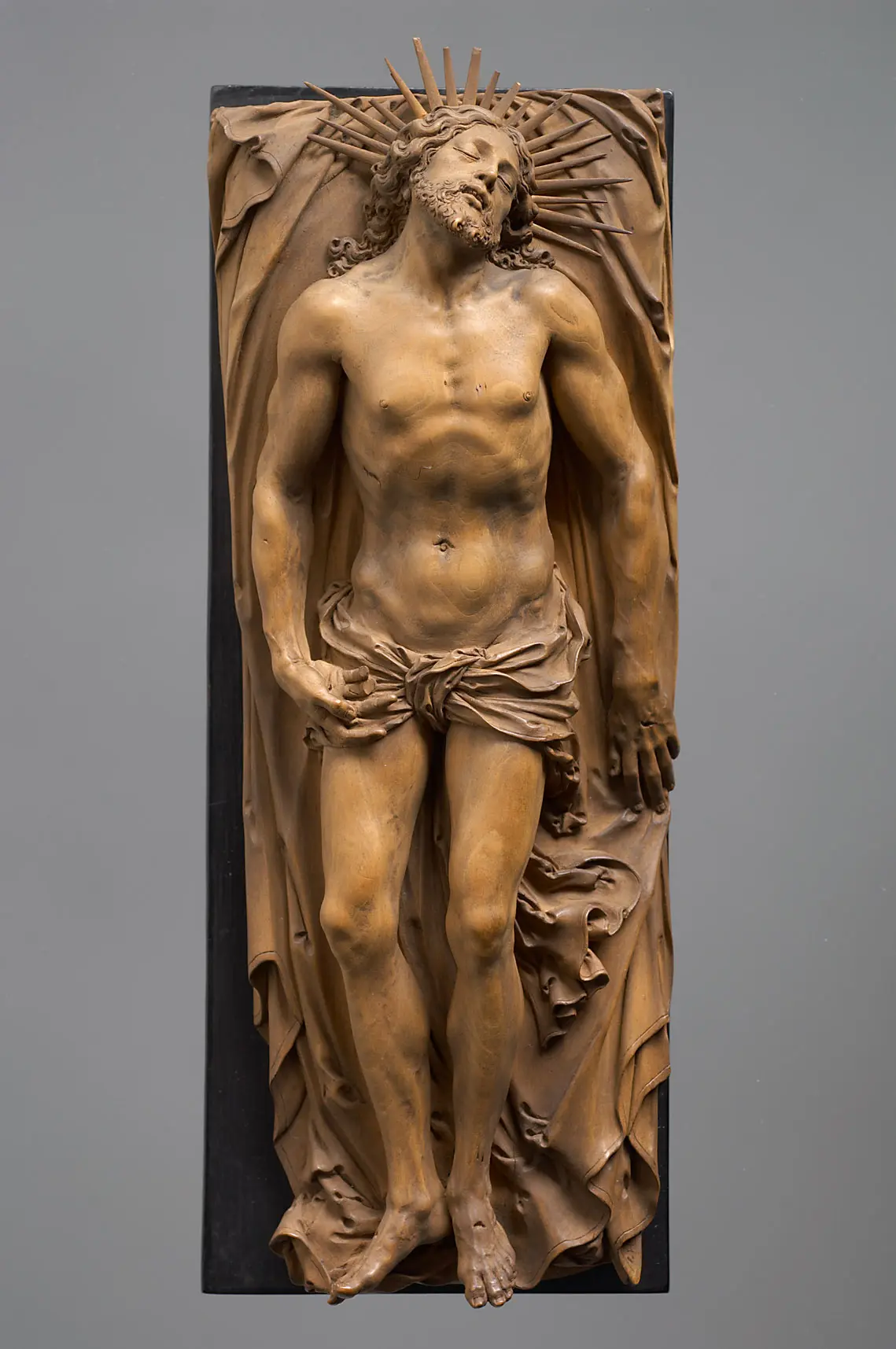A timely warning
Bilderfindungen Albrecht Dürers und anderer Künstler der Zeit um 1500, wie Veit Stoß, erlebten im 17. Jahrhundert eine bemerkenswerte Renaissance. Über die Druckgraphik verbreitete Motive vor allem religiöser Bildthemen wurden als Vorbilder aufgegriffen und neu interpretiert. Neben der Wertschätzung für die „alten Meister“ spielte dabei wohl auch der gezielte Rückgriff auf die Kunst im Dienst der Kirche vor der Spaltung in der Reformationszeit eine Rolle.
Title:
Dead Christ
Artist:
Zacharias Hegewald (1596 Chemnitz - 1639 Dresden)
Time:
ca. 1630
During his lifetime Georg Petel, who was born in Weilheim in Upper Bavaria, visited among other places Antwerp, Paris, Genoa, and Rome. After his wanderings he settled down in Augsburg, which at the time was a leading exporter of handcrafted luxury goods
Petel was close friends with the most famous painter of the Baroque north of the Alps, Peter Paul Rubens.

Ruben’s example and aesthetic inspired the motifs that wind and twist without end around the vessel. At the centre stands the drunken Silenus, goat-legged satyrs, male and female, struggle to prop him up. Music and dance heighten the collective delirium. Those who indulge to excess risk stultification, coarsening, and inopportune lust.

The artistic interpretation echoes these themes rather than merely soberly representing them. Ivory is a luxurious material; the intertwined, forceful sculptural forms, naturalistic surfaces, and uncompromisingly realistic figures adorn this magnificent drinking vessel.
More from the series #The Face of Europe
Explore Kunstgeschichten
Discover varied essays on a wide range of artworks from our extensive collection.
